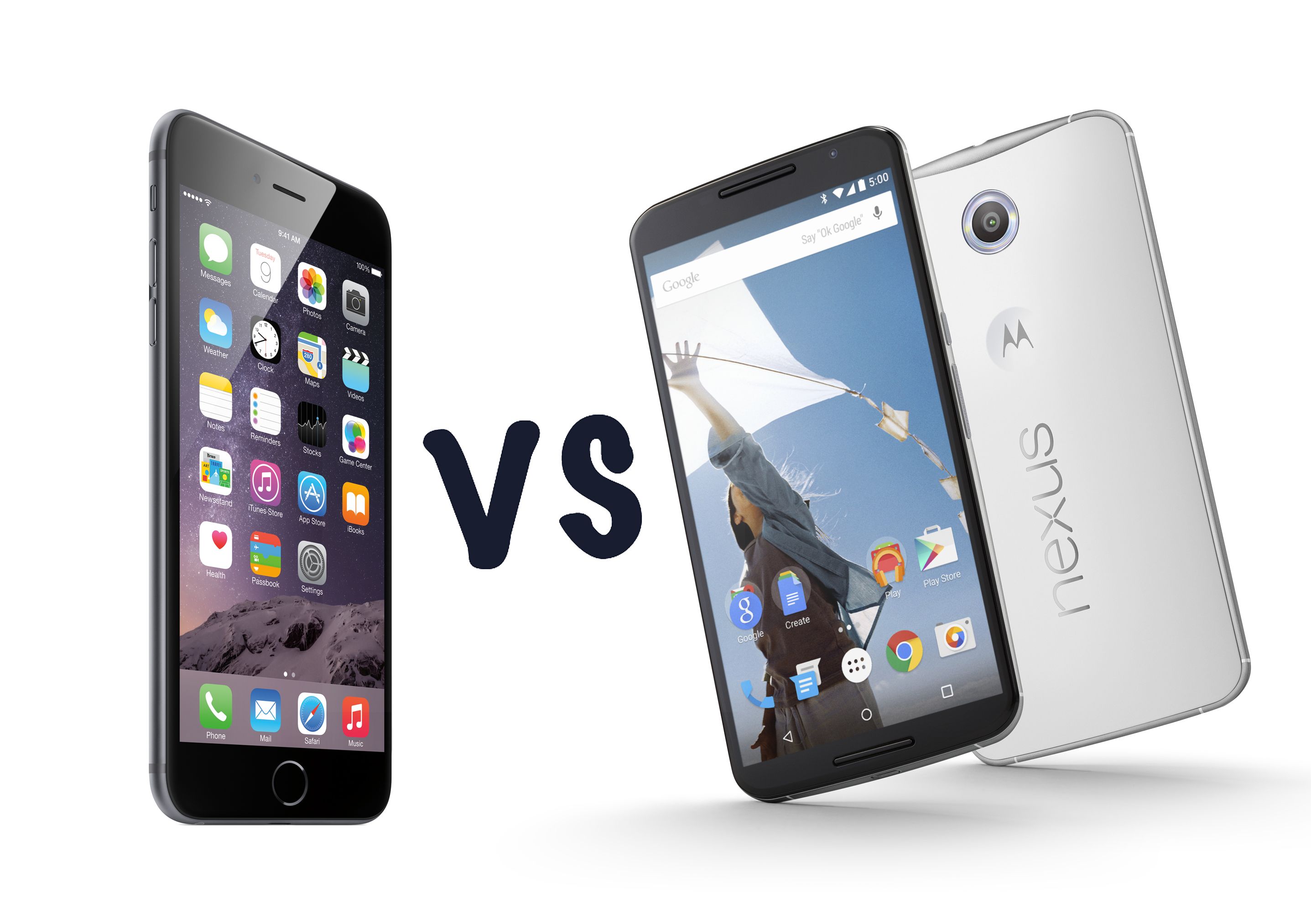Google has announced the Nexus 6, rocking a 5.96-inch display and the latest that Android has to offer.
It was only last month that Apple announced its huge phone, the iPhone 6 Plus. These two titans go head to head, but which will be knocked for six?
Design and build
The Nexus 6 offers design close to the Moto X, with an aluminium frame and a curved back, a different approach to the flat expanse of Apple's iPhone 6 Plus.
The Nexus 6 measures 82.98 x 159.26 x 10.06mm compared to the 77.8 x 158.1 x 7.1mm dimensions of the iPhone 6 Plus. The Nexus 6 weighs a hefty 184g to the iPhone's 172g.
The Nexus 6 has a display that's half an inch larger, so relatively speaking, the Google device crams more display into a space that's not hugely different in size.
There's no denying that the iPhone's aluminium unibody construction is lusciously premium, whether the Nexus 6 will be struck with bendgate or not remains to be seen.
There's one point worth noting though: place the Nexus 6 on a desk and it will rock around when you jab at the display, whereas the iPhone 6 stays nice and stable.
Display
The Nexus 6 puts its best foot forward with a 2650 x 1440 pixel resolution display, offering 493ppi across its 5.96-inch expanse.
The iPhone 6 Plus has a 1920 x 1080 pixel resolution on its 5.5-inch display, giving you 401ppi. That's quite the difference in pixels: the Nexus 6 will be able to display more fine detail.
The Nexus 6 has an AMOLED display, as favoured by the likes of Samsung, and the iPhone is a IPS LCD display. Until we see the Nexus 6 display in the flesh, we can't judge how it will handle colours, but the iPhone 6 Plus display is very good.
Ultimately, however, it's down to Google to use that dense display to best effect: without pixel pushing content, the resolution might be wasted.
Power and storage
The Nexus 6 lands with a Qualcomm Snapdragon 805 chipset clocked at 2.7GHz with 3GB of RAM. The iPhone 6 Plus houses Apple's 64-bit A8 chipset.
The actual numbers are almost immaterial here, as the devices run different software platforms. Neither will be a slouch: the Nexus 6 is one of the most powerful Android handsets released so far.
The Nexus 6 comes with 32 or 64GB storage options. The iPhone 6 Plus offers 16, 64, or 128GB capacities. Neither give you microSD card support.
Cameras
The Nexus range has never really excelled in the camera department, but the Nexus 6 steps up the resolution with a 13-megapixel sensor on the rear. It has optical image stabilisation and a dual LED flash.
Apple sticks to 8-megapixels, but the iPhone 6 Plus also offers optical image stabilisation, one of its top features.
On the front, the Nexus 6 has a 2MP camera, the iPhone 6 Plus has 1.2MP.
It's not only about the numbers though, as the iPhone 6 Plus delivers outstanding results. We can't judge the Nexus 6 until we've had the chance to thoroughly test it, but you can't assume that more megapixels will automatically deliver better results.
One number that does standout, however, is the 2160p UHD video capture. You'll be able to shoot 4k video on the Nexus 6, something the iPhone doesn't offer.
Battery life
The Nexus 6 has a 3220mAh battery promising a full day of use. There is Qi wireless charging on board. Motorola says you'll get 10 hours of video playback, 330 hours of standby and 24 hours of talk time.
The iPhone 6 Plus has a 2915mAh battery, that certainly lasts well from our tests. Apple's official figures state 14 hours of video playback, 384 hours of standby and 24 hours of 3G talk time.
It looks like Apple will have the edge on endurance.
Conclusions
Pure Android meets pure Apple (is there any other way?). The Nexus 6 and iPhone 6 Plus are giants of the smartphone world, offering the latest software in Android 5.0 Lollipop and iOS 8 respectively.
The Nexus is a touch larger overall, but offers a larger, higher resolution, display. The iPhone is lighter with a design that's slightly higher in quality with its all-metal construction. It's slimmer too, although we suspect the Nexus 6 will be slightly more sturdy.
The iPhone 6 Plus camera is excellent, but we can't dismiss the Nexus 6 until we've had the chance to put it through its paces.
There's a world of difference in the software experience that governs the day-to-day use of these phones and each has pros and cons. There's very little app divide between these two monster platforms and sophistication on both sides. Android's notifications system, further enhanced in Android 5.0 is excellent, as is the sharing, connected experience. iOS 8 offers a huge ecosystem, closer working with desktops and plenty more.
Then there's the price. The Nexus 6 is no longer delivers quite the bang for your buck that it used to. Costing $649 (£405, although UK price to be confirmed), it looks like it will still be cheaper than the iPhone 6 Plus at £619.

